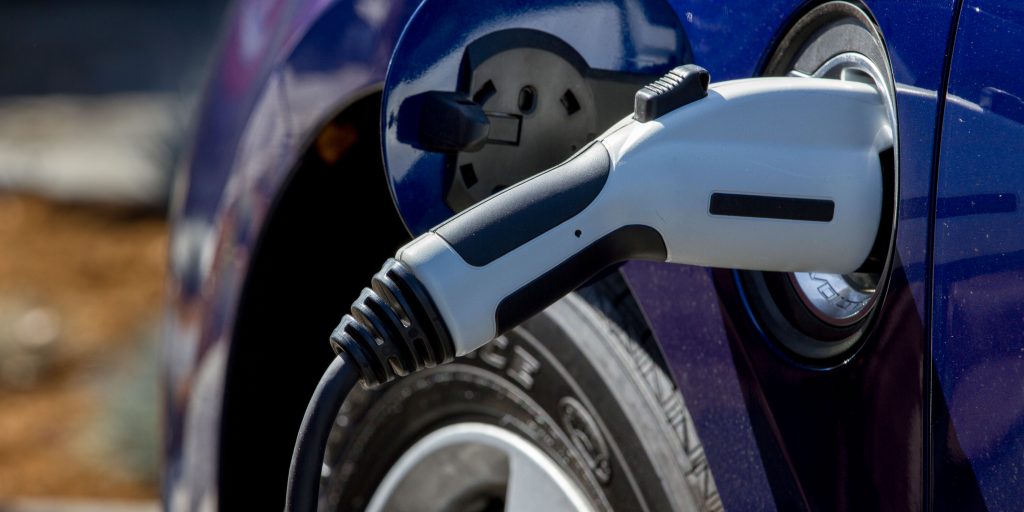How data can drive electric vehicle funding
Transportation is the highest greenhouse gas-emitting sector in the United States, with cars, trucks, commercial aircraft, trains and other sources producing, by most estimates, around 30 percent of all carbon emissions in the country.
Electric vehicles (EV) have the potential to reshape the transportation sector and support state and local decarbonization efforts. Private EV use is on the rise, a trend set to continue in the coming years. Forecasts show that by 2030, more than half of all passenger cars sold in the U.S. will be EVs.
At the same time, local transit agencies nationwide that operate bus and other vehicle fleets are at varying stages in their efforts to decarbonize their operations and cut emissions in their cities and communities.
State Departments of Transportation (DOT) are responsible for state-wide networks of EV chargers for individual EV users, while local transit agencies are beginning to procure EVs like battery-electric buses (BEB) for their fleets.
Both face challenges. The transportation networks where they operate lack the ecosystems of infrastructure needed to support widespread public and private EV use. Many are now in the initial planning stages for EV charging networks and related infrastructure to support transitioning fleets.
The Infrastructure Investment and Jobs Act
Faced with the need to solve complex challenges, both state DOTs and local transit agencies are turning to opportunities in the Infrastructure Investment and Jobs Act (IIJA).
The IIJA presents a historic opportunity to transform states, cities and communities and increase public and private electric vehicle use. It authorizes $7.5 billion for EVs and charging infrastructure, $5 billion for low- and no-emissions buses, and another $2.5 billion for electric ferries. Along with another $73 billion in funding for electric grid and power infrastructure, IIJA provides the framework to support state-wide networks of chargers and full-scope public transit decarbonization, from vehicle procurement to charging facilities to power generation and supply.
For private EV use, networks of chargers would encourage EV ownership—according to research from the International Council on Clean Transportation (ICCT), the 10 metropolitan areas in the U.S. with the highest levels of EV ownership also had the highest number of public charging outlets. The funds earmarked in the IIJA to deliver a nationwide network of 500,000 EV charging stations should be seen as a key component in achieving the IIJA’s objectives.
But while the IIJA presents a unique set of opportunities, it also poses some new challenges. For one, about $2.5 billion in funding is awarded on a competitive basis. And once awarded limited funding, state DOTs and local transit agencies will need to plan and implement effectively to get the most out of the money.
For public transit agencies applying for competitive funding, showing compelling data-backed justifications, detailed implementation plans and benefits to underserved communities will help them stand out.
Meanwhile, funding for state-wide charging networks is made available through the U.S. DOT’s National Electric Vehicle Infrastructure (NEVI) program. The NEVI program will help states establish interconnected networks intended to improve access and reliability for EV users. To be eligible for NEVI funds, states must have submitted an EV infrastructure deployment plan outlining how they would intend to use the funding. At present, all 50 states have submitted deployment plans.
The NEVI funds are formula-based, so while states need not compete for their share, they will need to use limited funds strategically to implement their proposed deployment plans.
Both transit agencies and state DOTs can greatly benefit from the use of data analytics to address these challenges.
Using data to plan for better outcomes
Public transit agencies applying for competitive grants for fleet transitions must answer a variety of questions: How might BEB use affect service routes? Where should maintenance and charging facilities be placed? How will this infrastructure get its electric power? Who benefits most from cleaner, quieter transit? Procuring the vehicles is only the first step—site selection, infrastructure modernization and route planning are key to an effective transition.
Many agencies rely on pre-pandemic travel pattern data or data collected manually, making effective planning difficult. Real-time mobility data can show them a better picture of their communities and help them plan for changing travel habits. For example, transit agencies can analyze data to understand drivers’ origins and destinations and even the level of emissions on a particular road. These details make for compelling grant applications.
Mobility data can also play a key role in the NEVI program, as it can provide unique insights into the movement of people and goods in a particular area. Real-time traffic data will help states plan—and course correct—as they roll out a network of chargers along state transportation corridors.
In 2023 transit agencies expect a series of grants for low- and no-emission buses that will allow them to procure battery-electric bus (BEB) fleets and decarbonize their transit networks. And the NEVI program will release funds to states annually through 2026.
Planning, modelling and tracking progress with real-time data can help state DOTs and local agencies determine what infrastructure and resources need to placed where to ensure effective transitions to reliable EV ecosystems.
A data-centred approach benefits states and cities alike in their drive towards a cleaner transportation sector—and healthier, more sustainable communities.
Ron Williams is senior vice president and general manager of Jacobs Buildings and Infrastructure business in the Americas. He has more than 34 years of experience leading large-scale infrastructure projects across transportation, water and beyond. Through diverse roles in design, construction, client management and sales, Williams has honed deep expertise partnering with public and private sector clients on dynamic infrastructure solutions to address challenges like climate change.




















